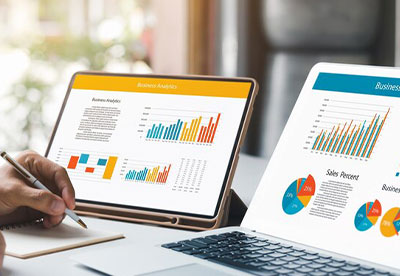Data is transformed into insights through the process of Business Intelligence Analytics, which helps businesses make better decisions. To extract insights from data, a variety of methods are utilized, including data management, data visualization, predictive modeling, data mining, forecasting simulation, and optimization.
Business Intelligence Analyst
Data like revenue, sales, market data, or customer interaction indicators of a firm may be gathered, cleaned up, and analyzed by a business intelligence analyst. BI analysts may also be asked to program tools and data models to better view or monitor data.
Forrester now describes business intelligence as “a collection of approaches, processes, architectures, and technologies that transform unstructured data into information that is relevant and usable.” As a result, “More effective strategic, tactical, and operational insights and decision-making can be facilitated,” according to the study.
Importance of Business Intelligence
The age of technological advancement is upon us. Thanks to technological advancements, our everyday lives have experienced a complete transformation, with the business world particularly impacted. Businesses today have access to data-driven tools and tactics that enable them to understand more than ever before about their customers and themselves. Still, not all of them are making use of them.
Improvement in Efficiency
BI systems aid in increasing organizational effectiveness, raising production and potentially boosting income. Thanks to business intelligence systems, organizations can quickly share critical information across departments, saving time on reporting, data extraction, and data analysis. Organizations can reduce unnecessary roles and responsibilities by more efficiently allowing information sharing.
Gaining New Customer Insights
Business intelligence helps organizations monitor and evaluate the most recent client purchase trends, so they devote time, money, and resources to it. The financial performance of your business will increase when you use BI to comprehend what and why clients are making purchases from you. With this insight, you may create new products and enhance old ones to more effectively satisfy customer needs and expectations.
Real-Time Data
Executives and decision-makers risk human mistakes and risk having outdated data before reports are even submitted for evaluation when they have to wait for reports to be assembled by several departments. Users of BI systems can access data in real-time via a variety of tools, like spreadsheets, graphical dashboards, and pre-written emails. When using business intelligence technologies, large amounts may be digested, processed, and distributed rapidly and precisely.
Sales Insight
The sales and marketing teams want to stay on top of their customers, and the majority do it by using customer relationship management (CRM) software. CRMs are to handle all customer interactions. Businesses can locate new customers, track and maintain existing ones, provide post-sale services, and more with the help of BI tools.
Ways to Achieve Success Business Intelligence Analytics
Prioritising Business Analytics
The time to start gathering data and developing an analytics plan for the future is now because business analytics may be extremely important in everything you do.
Selecting The Right Technology
Your analytics platform is also required in this scenario because of how quickly digital transformation is transferring your data to the cloud. Although almost all analytics providers are “in the cloud,” you want to choose one that is designed for the long term.
Costs of Infrastructure
The cost of your software license is just the start of an analytics platform’s expenses. Remember to include the cost of your complete infrastructure. What are the prices for your databases, servers, processing, related cloud services, and data storage? You may wind yourself paying more for these costs than the analytics platform itself, as they can soon add up.
Taking Advice From The Experts
Determine the subject matter experts in each department who can offer quick feedback and ensure the data and analytics teams have the business context necessary to produce efficient data assets that everyone can utilize and on which they can base future research.
Conclusion
BI is not solely the responsibility of the IT division. It frequently begins that way, but it must change. Although IT may concentrate on the storage, processing, and dissemination of BI, IT must collaborate with the business stakeholders who produce, comprehend, and use the intelligence if BI is to be truly beneficial to your firm. BI is a tool of business that helps to improve knowledge of the condition of affairs, not only a tool of the IT department even though technology may have enabled it.
3 mins read

















